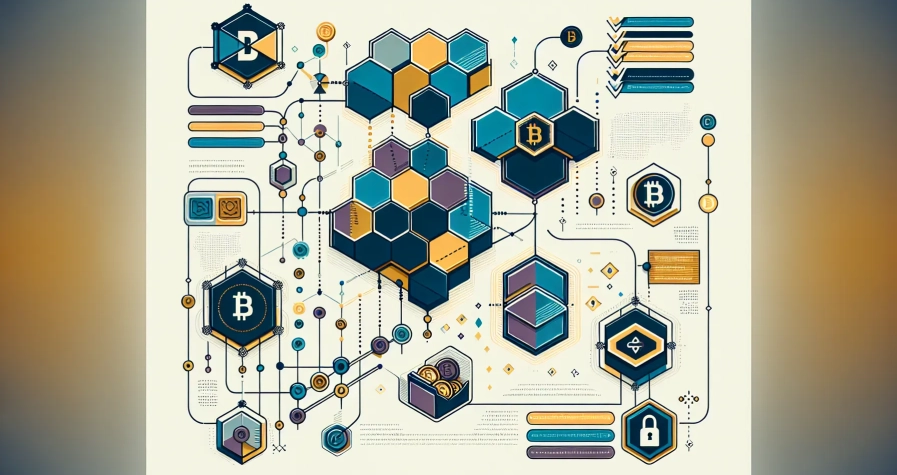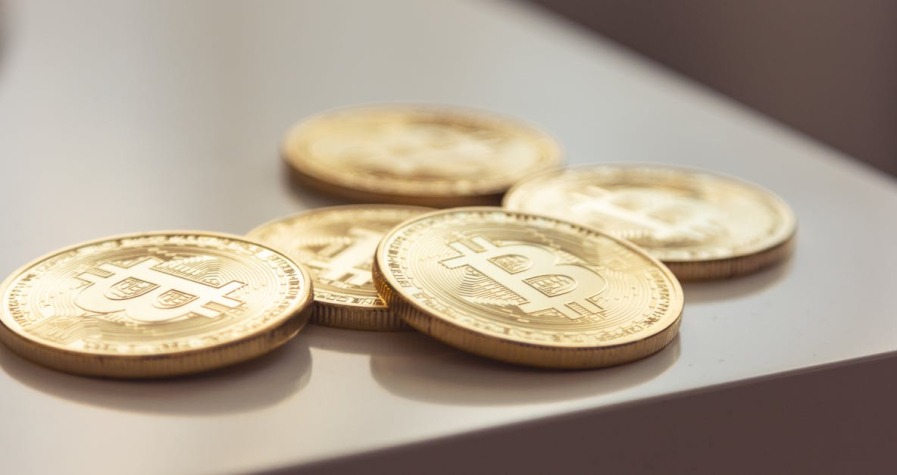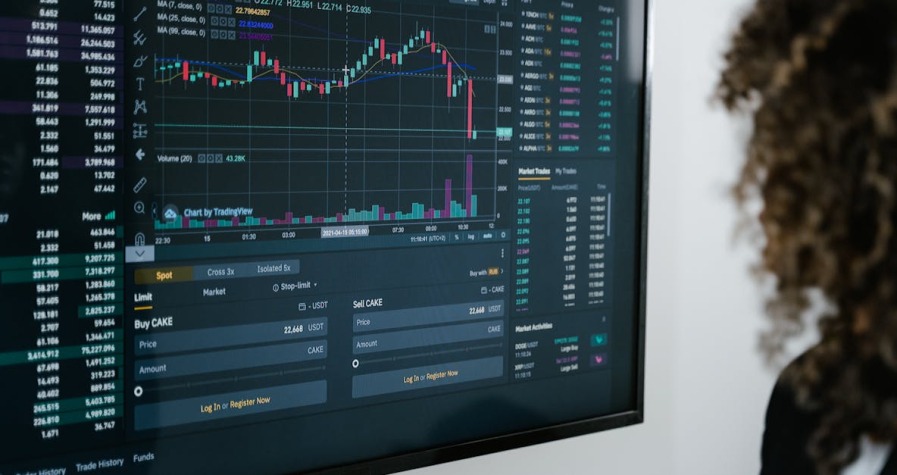Wondering where your cryptocurrency transaction went or when it’ll arrive? You’re not alone. Tracking blockchain transactions might seem daunting at first but it’s actually quite straightforward once you know the basics.
Every transaction on the blockchain creates a permanent digital footprint that’s publicly accessible. Whether you’ve sent Bitcoin to a friend or made a purchase with Ethereum you can monitor its progress from start to finish using specialised tools and block explorers.
Understanding how to track your transactions gives you peace of mind and helps you stay informed about your digital assets. You’ll learn to identify transaction IDs verify confirmations and troubleshoot any issues that might arise during the process.
Understanding Blockchain Transaction Tracking
Blockchain transaction tracking operates through a distributed ledger system that records every cryptocurrency movement permanently. You can access transaction data across Bitcoin, Ethereum, Litecoin and other major cryptocurrencies using blockchain explorers like Blockchain.info, Etherscan.io and Blockchair.com.
How Blockchain Transparency Works
Every transaction you initiate generates a unique transaction ID (TXID) that serves as your tracking reference. This alphanumeric string typically contains 64 characters and appears immediately after you broadcast your transaction to the network. You’ll find this TXID in your wallet interface or exchange confirmation email.
The blockchain stores transaction details including:
- Sender addresses – The wallet addresses that initiated transfers
- Recipient addresses – Destination wallets receiving funds
- Transaction amounts – Precise cryptocurrency values transferred
- Timestamp data – Exact time and date of transaction processing
- Fee information – Network fees paid for transaction priority
- Block numbers – Specific blockchain blocks containing transactions
Transaction Confirmation Process
Your transaction moves through several verification stages before final confirmation. Miners or validators first verify your transaction details against blockchain rules. The transaction then enters a memory pool (mempool) where it awaits inclusion in the next block.
| Confirmation Stage | Bitcoin Time | Ethereum Time | Status |
|---|---|---|---|
| Broadcast | Instant | Instant | Pending |
| First Confirmation | 10-60 minutes | 15 seconds-5 minutes | Confirmed |
| Full Security | 60 minutes (6 confirmations) | 5-10 minutes (12 confirmations) | Finalised |
Network Fees and Transaction Speed
Higher network fees typically result in faster transaction processing. You can adjust gas prices on Ethereum or set custom fees on Bitcoin to prioritise your transactions during network congestion. Most blockchain explorers display current fee recommendations based on desired confirmation speed.
Transaction tracking becomes particularly valuable during periods of network congestion when processing times extend beyond normal parameters. You can monitor your transaction status and estimated confirmation times through real-time blockchain data.
What Information You Need to Track Your Transaction
Tracking your blockchain transaction requires specific pieces of information that serve as digital fingerprints for your cryptocurrency movement. You’ll need these key data points to locate and monitor your transaction’s progress through blockchain explorers.
Transaction Hash (TxID)
The Transaction Hash represents the most critical piece of information for tracking your blockchain transaction. You’ll find this unique alphanumeric identifier generated by hashing your transaction data, creating an irreversible reference that distinguishes your transaction from millions of others on the network.
Your TxID appears in your wallet interface immediately after sending cryptocurrency or in confirmation emails from exchanges. This 64-character string (for Bitcoin) or similar format for other cryptocurrencies serves as your transaction’s permanent address on the blockchain. You simply enter this hash into any blockchain explorer to access complete transaction details including status, confirmations, and involved parties.
Blockchain explorers like Etherscan for Ethereum or Blockstream Explorer for Bitcoin accept your TxID input and display real-time transaction information. Your transaction hash remains constant throughout the entire process, from initial broadcast to final confirmation, making it your primary tracking tool.
Wallet Addresses
Wallet addresses provide essential verification points for confirming your transaction’s path and participants. You’ll examine both the sender’s address (your originating wallet) and the recipient’s address to ensure funds moved correctly between intended parties.
These addresses appear as alphanumeric strings unique to each cryptocurrency network, starting with specific characters that identify the blockchain type. Bitcoin addresses begin with ‘1’, ‘3’, or ‘bc1’, whilst Ethereum addresses start with ‘0x’ followed by 40 hexadecimal characters.
Your transaction tracking becomes more comprehensive when you verify these addresses match your intended transfer. Input and output addresses displayed in blockchain explorers confirm the exact flow of cryptocurrency, showing which wallets sent funds and which wallets received them. Multiple addresses may appear in complex transactions involving change addresses or batch processing.
Block Height and Confirmation Details
Block height indicates the specific block number where miners included your transaction in the blockchain. You’ll use this information to determine your transaction’s position within the network’s chronological sequence and calculate how many blocks have been added since your transaction’s inclusion.
Confirmation details reveal how many subsequent blocks have been mined after your transaction’s block, indicating the security level of your transaction. Bitcoin transactions typically require 6 confirmations for full security, whilst Ethereum transactions achieve reasonable security after 12 confirmations.
Your blockchain explorer displays both current block height and your transaction’s block height, allowing you to calculate confirmations by subtracting your transaction’s block number from the current block number. Higher confirmation counts indicate greater transaction finality and reduced reversal risk, particularly important for large value transfers or merchant payments.
Using Blockchain Explorers to Monitor Transactions
Blockchain explorers serve as your primary tool for tracking cryptocurrency transactions across different networks. These web-based platforms provide comprehensive transaction data by allowing you to search using transaction IDs wallet addresses or block numbers.
Popular Blockchain Explorer Platforms
Bitcoin explorers offer detailed transaction tracking across the world’s largest cryptocurrency network. Blockchain.com provides comprehensive Bitcoin transaction data including confirmation status and fee information whilst Mempool.space displays real-time network congestion and transaction queue details. Blockstream Explorer delivers advanced features for technical users including script analysis and transaction visualisation tools.
Ethereum tracking platforms specialise in monitoring smart contract interactions and token transfers. Etherscan serves as the most popular Ethereum explorer offering contract verification transaction traces and gas fee analytics. Ethplorer focuses specifically on ERC-20 token transactions and provides detailed token holder information across the Ethereum network.
Multi-currency explorers support transaction tracking across multiple blockchain networks simultaneously. Cryptomus enables users to monitor Bitcoin Ethereum Litecoin and other major cryptocurrencies through a unified interface. CoinMarketCap’s explorer tools integrate market data with transaction information providing context for trading activities and network usage patterns.
How to Navigate Transaction Details
Transaction Hash identification appears at the top of every transaction page displaying your unique 64-character alphanumeric identifier. Copy this hash from your wallet interface or exchange confirmation email then paste it into the explorer’s search bar to locate your specific transaction amongst millions of network records.
Address verification sections show both sender and recipient wallet addresses involved in your transfer. Compare these addresses against your wallet interface to confirm the transaction path matches your intended transfer route. Multi-input transactions display multiple sender addresses whilst multi-output transactions show funds distributed across several recipient addresses.
Transfer amount displays present the exact cryptocurrency quantity moved during your transaction including decimal precision for fractional transfers. Fee calculations appear separately showing the network costs paid to miners or validators for processing your transaction. These fees fluctuate based on network congestion and your selected priority level during transaction submission.
Timestamp records indicate when your transaction entered the blockchain measured in both local time and block height numbers. Confirmation counters show how many subsequent blocks have been added since your transaction’s inclusion with higher numbers indicating stronger network validation and reduced reversal probability.
Step-by-Step Guide to Tracking Different Cryptocurrencies
Each cryptocurrency operates on its own blockchain network, requiring specific tools and approaches for transaction tracking. You’ll find that different cryptocurrencies use distinct blockchain explorers and tracking methods tailored to their unique network architectures.
Tracking Bitcoin Transactions
Bitcoin transaction tracking relies primarily on specialised blockchain explorers like Cryptomus, Blockchain.com, and Mempool. You enter your transaction ID (TXID) or wallet address into these explorers to access comprehensive transaction data including transfer amounts, timestamps, transaction fees, confirmation status, and sender/receiver addresses.
Follow these steps to track your Bitcoin transaction:
- Locate your TXID from your wallet interface or exchange confirmation email
- Visit a Bitcoin blockchain explorer such as Blockchain.com or Mempool
- Enter your TXID in the search bar at the top of the page
- Review transaction details including amount sent, fees paid, and confirmation count
- Check confirmation status to determine if your transaction has been processed
Your wallet provides transaction history views, though these contain less detail than dedicated blockchain explorers. Bitcoin explorers display block height, mining fees, and input/output addresses with precise timestamps for complete transaction transparency.
Tracking Ethereum Transactions
Ethereum transactions require Ethereum-specific blockchain explorers like Etherscan, where you input transaction hashes, addresses, or block numbers to retrieve transaction details. You cannot track Ethereum transactions using Bitcoin explorers because each cryptocurrency operates on separate blockchain networks.
Track your Ethereum transaction using these steps:
- Obtain your transaction hash from your Ethereum wallet or exchange
- Navigate to Etherscan.io or another Ethereum blockchain explorer
- Input your transaction hash in the search field
- Examine transaction data including gas fees, block number, and contract interactions
- Verify transaction success by checking the status indicator
Ethereum explorers provide additional data specific to the network, including gas prices, smart contract interactions, and token transfers. You’ll see detailed information about ERC-20 token movements and decentralised application interactions within the transaction record.
Tracking Other Altcoin Transactions
Altcoin tracking requires blockchain explorers specific to each cryptocurrency because blockchains operate independently. Popular altcoins like Litecoin, Cardano, and Ripple maintain their own dedicated explorers accessible online for tracking transactions on their respective networks.
Use this approach for tracking altcoin transactions:
- Identify the correct blockchain explorer for your specific cryptocurrency
- Gather your transaction details including TXID and wallet addresses
- Access the appropriate explorer through official project websites
- Search using your transaction ID or wallet address
- Analyse the transaction information displayed on the explorer
Third-party tools like CoinTracker or Coinpanda help manage and track multiple cryptocurrencies across different blockchains from a single interface. These platforms aggregate transaction data from various networks, allowing you to monitor diverse cryptocurrency portfolios without visiting multiple explorers individually.
| Cryptocurrency | Primary Explorer | Additional Features |
|---|---|---|
| Bitcoin | Blockchain.com, Mempool | Fee tracking, block analysis |
| Ethereum | Etherscan.io | Smart contracts, gas tracking |
| Litecoin | Blockchair.com | Mining statistics |
| Cardano | Cardanoscan.io | Staking rewards tracking |
| Ripple | XRPScan.com | Escrow monitoring |
Interpreting Transaction Status and Confirmations
Once you’ve located your transaction on a blockchain explorer, you’ll encounter different status indicators that reveal where your transaction sits in the processing pipeline. Understanding these statuses helps you gauge when your transaction becomes final and secure.
Pending vs Confirmed Transactions
Pending transactions appear when your cryptocurrency transfer broadcasts to the network but hasn’t entered a confirmed block yet. These transactions sit in the memory pool (mempool), where miners or validators queue them for processing. You’ll notice pending status particularly during network congestion periods or when you’ve set transaction fees below optimal levels.
Confirmed transactions indicate successful validation and inclusion in a blockchain block. The confirmation count shows how many additional blocks miners have added after your transaction’s block. Bitcoin transactions typically require 1-6 confirmations depending on the transfer value, whilst Ethereum transactions often consider 12-35 confirmations as secure finality.
Failed transactions occur when processing encounters errors such as insufficient gas fees, smart contract failures, or invalid recipient addresses. Failed transactions still consume network fees on blockchains like Ethereum, even though the intended transfer doesn’t complete.
| Transaction Status | Blockchain Location | Security Level | Typical Wait Time |
|---|---|---|---|
| Pending | Mempool | None | Variable |
| 1 Confirmation | First block | Low | 10-15 minutes (Bitcoin) |
| 6+ Confirmations | Multiple blocks | High | 1+ hours (Bitcoin) |
| Failed | Network rejected | None | Immediate |
Understanding Network Fees and Processing Times
Transaction fees directly influence processing speed because miners prioritise higher-fee transactions for block inclusion. During network congestion, transactions with standard fees may wait hours or days for confirmation, whilst premium-fee transactions process within minutes.
Bitcoin processing times average 10 minutes per block, though network difficulty adjustments and fee competition affect actual confirmation speeds. High-priority transactions with fees above 20 satoshis per byte typically confirm in the next block.
Ethereum processing times fluctuate based on gas price settings and network demand. Base fees adjust automatically every block, whilst priority fees (tips) incentivise faster inclusion. Transactions with gas prices below network averages often remain pending until congestion decreases.
Fee optimisation strategies include monitoring real-time fee estimators, using wallet fee recommendations during low-congestion periods, and setting custom fee levels based on urgency requirements. Many blockchain explorers display current fee rates alongside transaction data to help you benchmark your transaction’s competitiveness.
Troubleshooting Common Tracking Issues
Blockchain transactions occasionally encounter problems that can cause confusion or concern for users. Understanding how to identify and resolve these issues ensures you maintain control over your cryptocurrency transfers.
Missing or Delayed Transactions
Network congestion represents the primary cause of missing or delayed cryptocurrency transactions. During peak usage periods, thousands of transactions compete for limited block space, creating bottlenecks that slow processing times significantly.
Transaction fees play a crucial role in processing priority. Miners prioritise transactions with higher fees, leaving low-fee transactions stuck in pending status for extended periods. Your transaction may appear “missing” if it drops from the mempool due to timeout or insufficient fees.
Common causes of delayed transactions include:
- Network congestion during market volatility
- Transaction fees below current market rates
- Mempool size exceeding capacity limits
- Technical issues with your wallet provider
Check your transaction status using the appropriate blockchain explorer first. If your transaction remains pending after several hours, consider using fee acceleration services offered by major wallets or exchanges. Some platforms allow transaction cancellation if it hasn’t been confirmed, enabling you to resubmit with higher fees.
Wait for network congestion to ease if acceleration options aren’t available. Most delayed transactions eventually process once network activity decreases, though this can take several days during severe congestion periods.
Failed Transaction Recovery
Transaction failures occur due to technical errors rather than network delays. Insufficient gas fees, incorrect recipient addresses, or smart contract errors when interacting with decentralised applications (DApps) commonly trigger failed transactions.
Failed transactions typically don’t deduct your cryptocurrency balance, but they do consume gas fees on networks like Ethereum. Your blockchain explorer displays specific failure reasons, helping you identify the exact problem.
Primary failure causes include:
- Gas limit set too low for transaction complexity
- Invalid or non-existent recipient addresses
- Smart contract execution errors
- Insufficient balance to cover total transaction costs
Review the failure message on your blockchain explorer to understand the specific error. Most wallets allow transaction retry with corrected parameters, such as increased gas limits or verified addresses.
Monitor failed transactions closely as they may indicate security threats or technical vulnerabilities. Repeated failures from unknown sources could signal hacking attempts or compromised wallet security, requiring immediate investigation and protective measures.
Resubmit your transaction with appropriate corrections once you’ve identified the cause. Increase gas fees for complex transactions, verify recipient addresses carefully, and ensure sufficient balance covers both transfer amounts and associated fees.
Advanced Tracking Tools and Techniques
Advanced blockchain analysis extends far beyond basic explorer searches, employing sophisticated methods to uncover transaction patterns and wallet relationships. You can leverage these professional-grade techniques to trace complex fund movements and identify connections between seemingly unrelated addresses.
Blockchain Analysis and Pattern Recognition
Blockchain analysis examines transaction histories and behavioural patterns to map relationships between different wallet addresses. You’ll find this technique particularly useful when investigating the flow of funds across multiple transactions and identifying wallet clusters controlled by the same entity.
DBSCAN clustering algorithms group transactions by analysing density patterns in blockchain data. This machine learning approach reveals clusters of addresses that might belong to the same user, even when sophisticated obfuscation techniques are employed. Professional investigators use DBSCAN to detect coordinated activities and identify related wallet addresses across large datasets.
Wallet clustering techniques identify sets of addresses likely controlled by the same individual or organisation. You can apply these methods by examining input patterns, transaction timing, and common behavioural signals that indicate shared ownership. These clustering approaches prove especially effective for tracking entities attempting to disguise their transaction activities.
Cross-Chain and Graph Analysis Methods
Cross-ledger tracking follows cryptocurrency movements between different blockchain networks. You can trace funds moving through exchange platforms like ShapeShift, monitoring currency conversions and identifying original fund sources across multiple blockchain ecosystems. This technique becomes crucial when investigating transactions that span different cryptocurrencies.
Graph analysis represents wallets and transactions as interconnected nodes and edges, creating visual maps of blockchain activity. You’ll discover transaction patterns, identify suspicious clusters, and detect relationships between addresses using these graphical representations. Professional forensics teams rely on graph analysis to visualise complex transaction networks and identify potential money laundering patterns.
Professional Monitoring and Tagging Systems
Address tagging systems label known wallet addresses for systematic monitoring and categorisation. You can tag addresses as exchanges, savings wallets, or merchant accounts, creating organised tracking systems for ongoing surveillance. These labels enhance your ability to quickly identify transaction participants and understand fund flows.
Custom API integration enables automated monitoring through developer tools like Crypto APIs and CoinGecko API. You can build personalised tracking systems that provide real-time alerts for specific addresses or transaction types, creating tailored monitoring solutions for your particular needs.
| Tool Type | Primary Function | Best Used For |
|---|---|---|
| DBSCAN Clustering | Groups related addresses | Identifying hidden connections |
| Graph Analysis | Visual pattern detection | Complex network mapping |
| Cross-ledger Tracking | Multi-blockchain monitoring | Exchange-based investigations |
| Address Tagging | Systematic labelling | Organised surveillance |
| API Integration | Automated monitoring | Real-time alerts |
Professional Forensics Platforms
Specialised analytics platforms like Nansen, Elliptic, and Glassnode combine multiple tracking techniques into comprehensive investigation suites. These professional tools integrate clustering algorithms, graph analysis, and cross-chain tracking capabilities, providing law enforcement and regulatory bodies with sophisticated blockchain forensics capabilities.
You can access these platforms to detect illicit activities, investigate complex transaction networks, and identify potential regulatory violations. Professional forensics platforms often combine real-time monitoring with historical analysis, creating comprehensive pictures of blockchain activity patterns and participant behaviours.
Conclusion
You now have all the essential skills and knowledge needed to track your blockchain transactions effectively. From understanding transaction IDs to using blockchain explorers and troubleshooting common issues you’re equipped to monitor your cryptocurrency movements with confidence.
Remember that tracking your transactions isn’t just about satisfying curiosity—it’s a vital security practice that helps you verify transfers and protect your digital assets. Whether you’re dealing with Bitcoin Ethereum or any other cryptocurrency the fundamental principles remain the same.
The blockchain’s transparency works in your favour providing an immutable record of every transaction. By mastering these tracking techniques you’ll never have to wonder about the status of your cryptocurrency transfers again.
Frequently Asked Questions
What is blockchain transaction tracking?
Blockchain transaction tracking is the process of monitoring cryptocurrency movements using publicly accessible blockchain data. Each transaction creates a permanent digital footprint with a unique transaction ID (TXID), allowing users to verify transfers, check confirmations, and monitor their cryptocurrency activities across different networks.
How do I find my transaction ID (TXID)?
Your transaction ID is available in your wallet interface after sending cryptocurrency or in confirmation emails from exchanges. It’s a unique alphanumeric string that serves as your transaction’s fingerprint. Copy this TXID and paste it into a blockchain explorer to track your transaction’s progress.
What is a blockchain explorer?
A blockchain explorer is a web-based tool that allows you to search and view transaction details on cryptocurrency networks. Popular explorers include Blockchain.com for Bitcoin, Etherscan for Ethereum, and multi-currency platforms like Cryptomus that support various cryptocurrencies from one interface.
How long do cryptocurrency transactions take to confirm?
Bitcoin transactions typically take 10-60 minutes for initial confirmation, while Ethereum transactions usually confirm within 15 seconds to 5 minutes. Confirmation times depend on network congestion, transaction fees, and the specific cryptocurrency. Higher fees generally result in faster processing.
What does “pending” transaction status mean?
A pending transaction has been broadcast to the network but hasn’t been included in a block yet. It sits in the memory pool awaiting confirmation by miners or validators. Pending status is normal and doesn’t indicate any problems with your transaction.
Why is my transaction taking so long to confirm?
Delayed transactions are usually caused by low transaction fees or network congestion. During busy periods, miners prioritise transactions with higher fees. You can check current network conditions on blockchain explorers and consider using fee acceleration services if delays persist.
Can cryptocurrency transactions fail?
Yes, transactions can fail due to insufficient gas fees, incorrect recipient addresses, or network issues. Failed transactions typically return funds to your wallet, minus any gas fees consumed during the failed attempt. Always double-check addresses before sending cryptocurrency.
What information do I need to track a transaction?
You need the transaction hash (TXID) as the primary identifier. Additionally, knowing the sender and recipient wallet addresses helps verify the transaction path. Block height and confirmation count provide insights into transaction security and finality.
Are cryptocurrency transactions truly anonymous?
Cryptocurrency transactions are pseudonymous, not anonymous. While personal identities aren’t directly visible, all transaction data is publicly recorded on the blockchain. Advanced analysis techniques can potentially link addresses to real-world identities through various methods.
How do I track transactions across different cryptocurrencies?
Each cryptocurrency operates on its own blockchain network, requiring specific explorers. Use Blockchain.com for Bitcoin, Etherscan for Ethereum, and dedicated explorers for other altcoins. Multi-currency platforms like CoinTracker can help manage tracking across various cryptocurrencies simultaneously.









